During the holiday season of 1948, three well-known performing artists with Western Pennsylvania connections all appeared in the same motion picture: MGM’s movie musical “Words and Music,” a biopic roughly based on the story of the creative partnership of Richard Rodgers and Lorenz Hart. For each of the performers—Gene Kelly, Perry Como, and Lena Horne—the film marked a turning point. One went on to greater acclaim on the big screen while two turned away from Hollywood. Their divergent paths illustrated larger forces shaping American culture in the years following World War II.
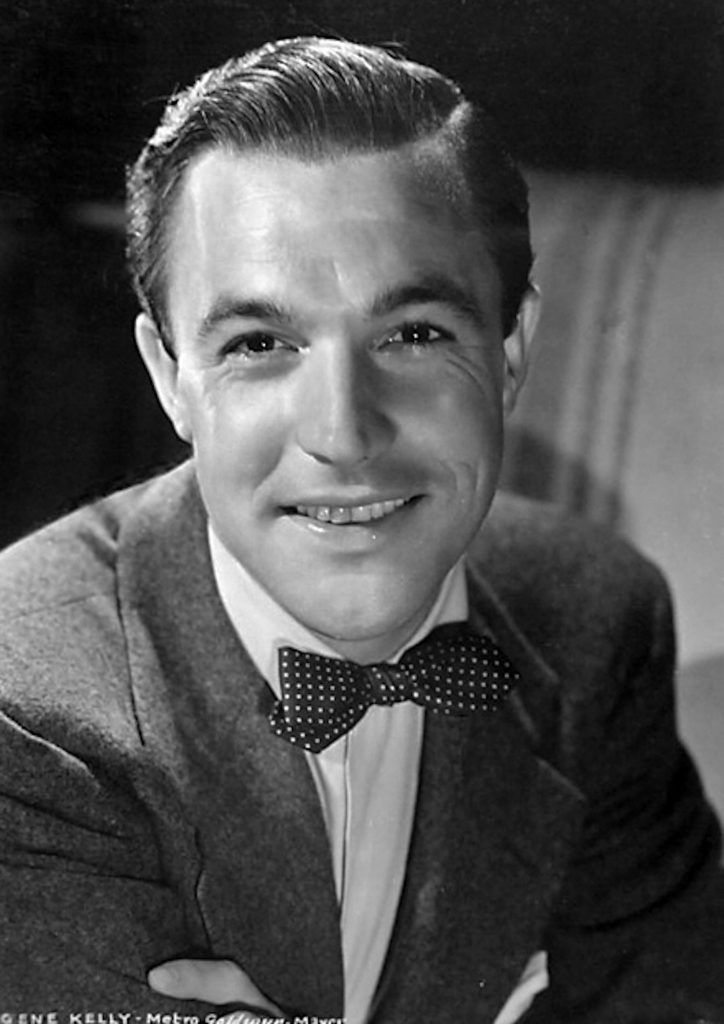
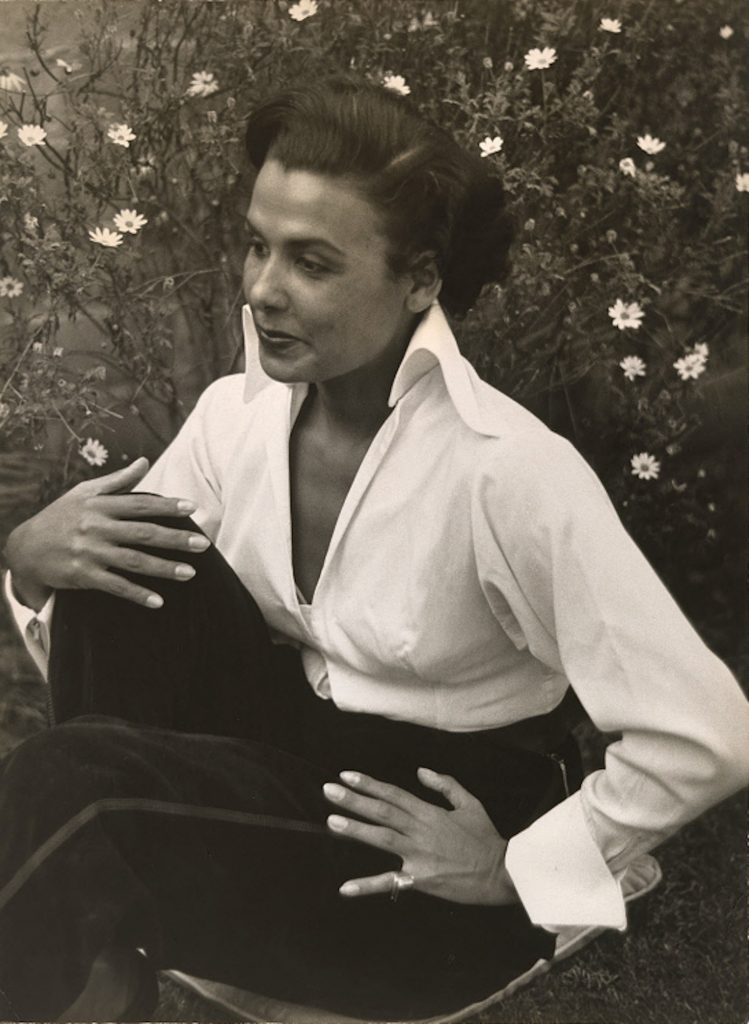
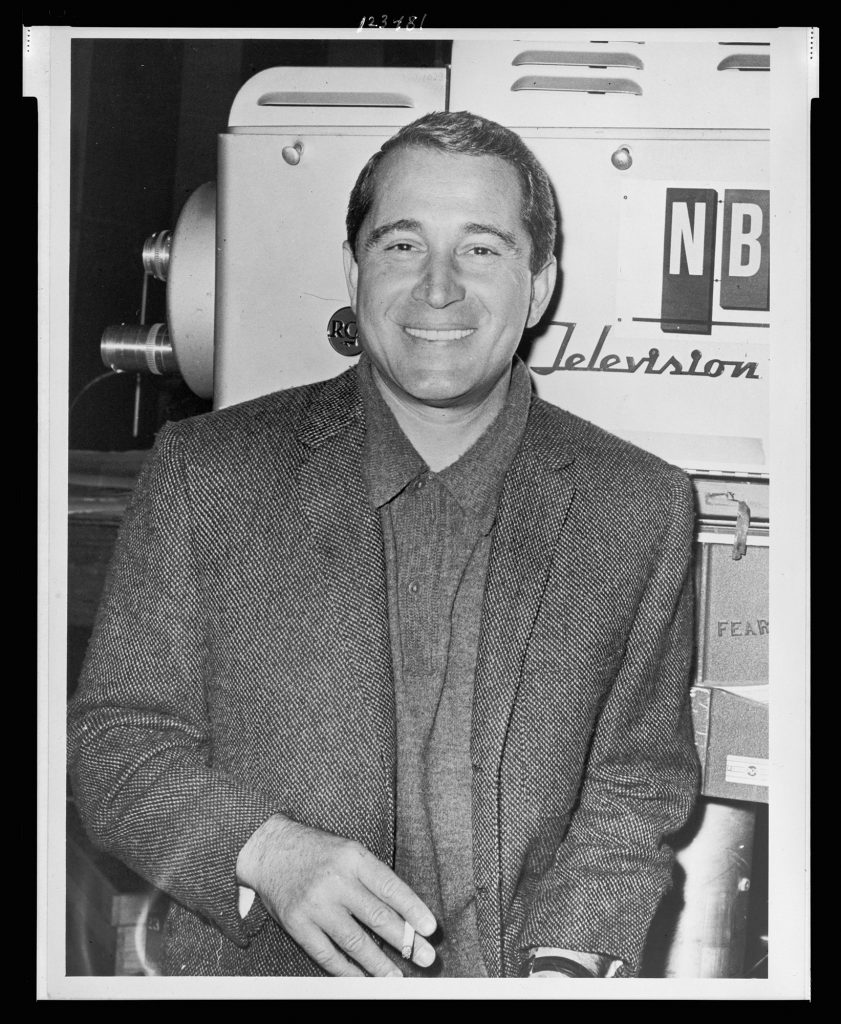
A Special Film Showing
Shortly before New Year’s Eve, 1948, the Pittsburgh Sun-Telegraph announced a special gathering taking place downtown at the Lowe’s Penn Theater (now Heinz Hall for the Performing Arts but built as a movie palace in 1927 by Marcus Loew, also head of MGM studios).[1] Gene Kelly’s family and Perry Como’s mother were meeting for a private screening of “Words and Music,” opening New Year’s Eve. They were to be joined by actor Joe Yule, starring in “Finian’s Rainbow” at the Nixon theater. Yule’s son, Mickey Rooney, starred in “Words and Music.” Multiple news photos captured the Kelly family and Yule cheering their sons on screen. None of the coverage mentioned that former Pittsburgher Lena Horne also appeared in the film, her inclusion judged earlier by The Pittsburgh Courier to be her “best MGM chance to date.”[2]
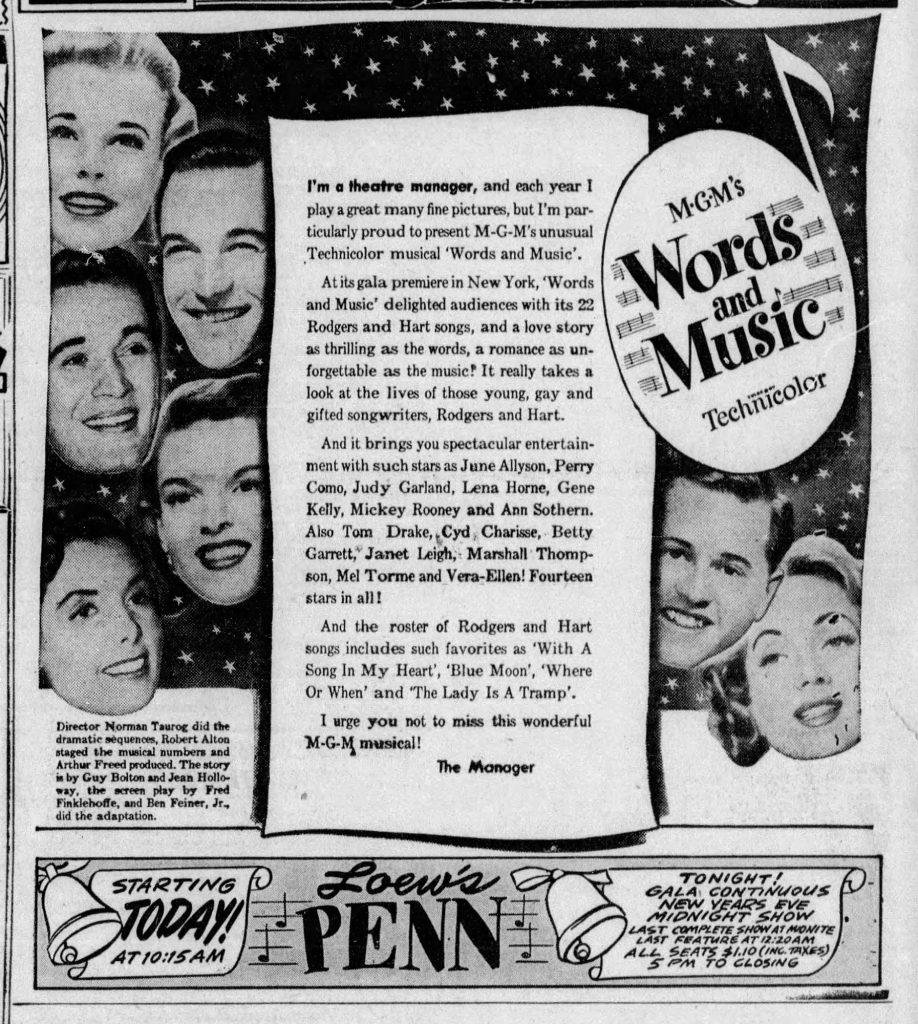
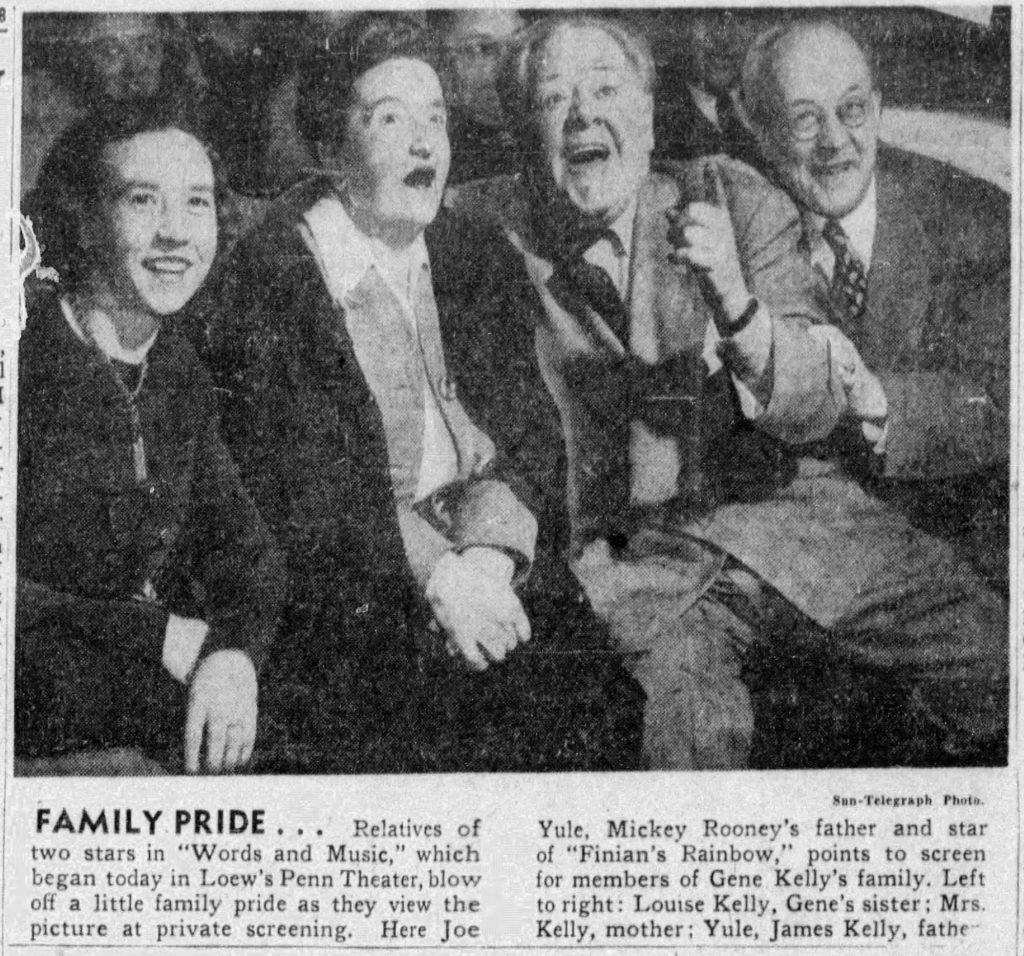
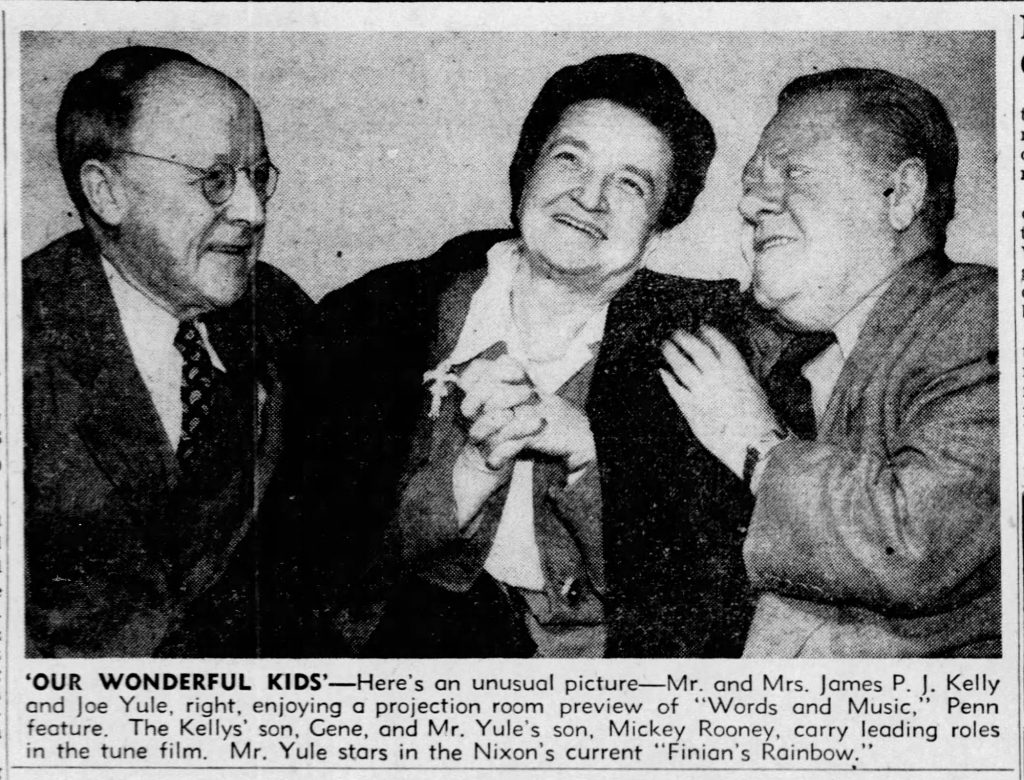
New directions in dance on film
The promotional focus on Gene Kelly reflected his rising status in Hollywood and his popularity in Pittsburgh. After entering the industry with MGM’s “For Me and My Gal” in 1942, he had appeared in nine feature films by 1947 and starred in two more in 1948, “The Pirate” and “The Three Musketeers.” His appearance in “Words and Music” was less than eight minutes long. But for many people, it was the highlight of the film. Today, this scene, featuring Kelly and partner Vera-Ellen in the Rodgers and Balanchine ballet “Slaughter on Tenth Avenue,” is often cited as one of the film’s important sequences.[3] Shaping his own interpretation of the choreography and adding new steps, Kelly heightened the tragedy of the story of a deadly feud between two men competing for a dance hall girl. Turning a somewhat comedic original dance into a dramatic confrontation, Kelly began experimenting with techniques he would enlarge in later works. The resulting muscular jazz ballet presaged the greater fame he would achieve in films such as “On the Town” (1949), also co-starring Vera-Ellen, “An American in Paris” (1951), and “Singin’ in the Rain” (1952).
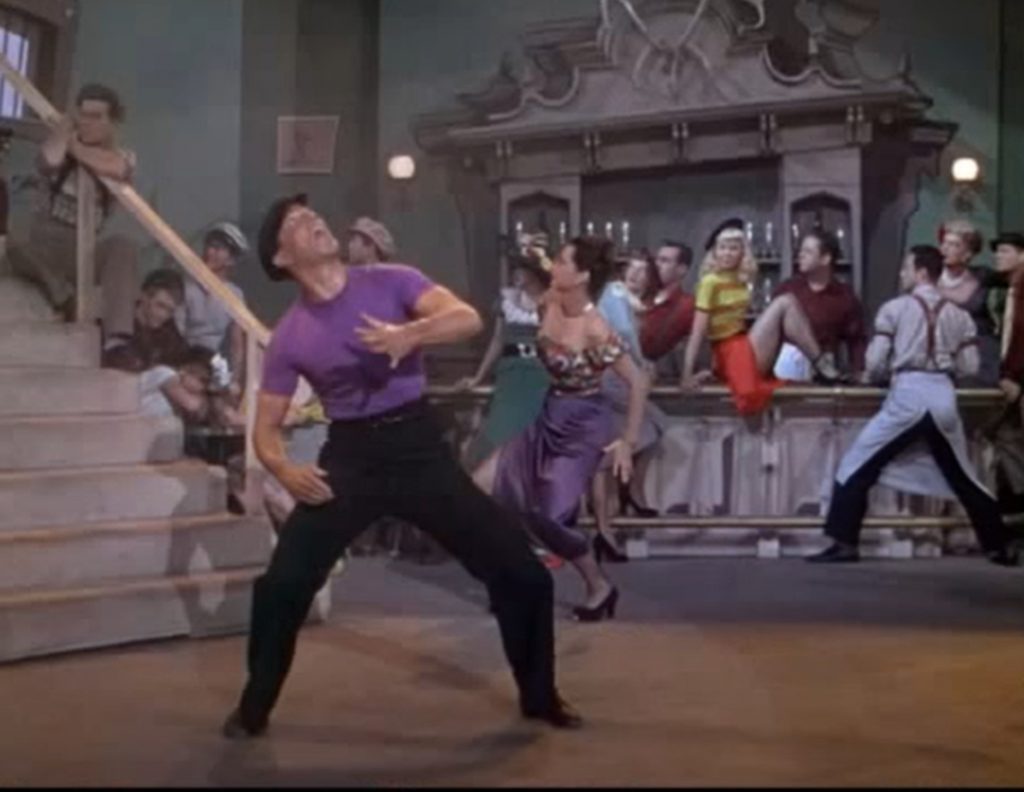
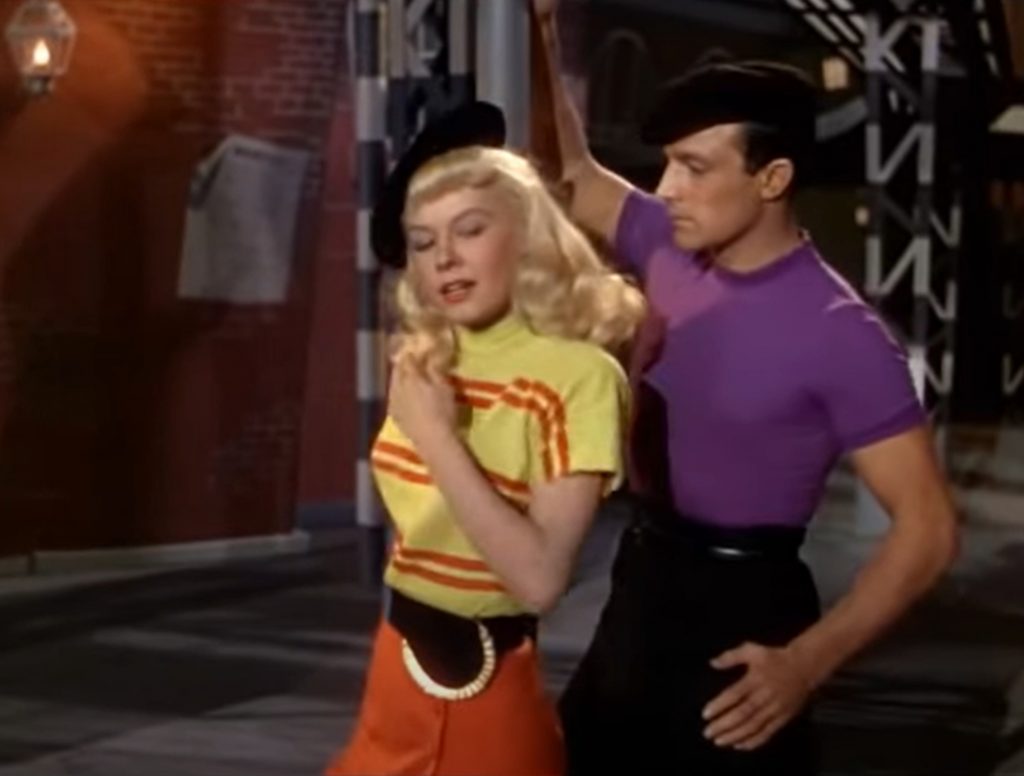
From the big screen to the small screen
While Gene Kelly was the rising movie star, the theatrical trailer for “Words and Music” (viewable – https://www.youtube.com/watch?v=brAKq8SJ9K8) emphasized Canonsburg crooner Perry Como, the best-selling recording artist whose songs “Lover” (1932) and “With a Song in My Heart” (1929), opened and closed the preview. Como, whose good looks and engaging persona earned him a contract with 20th Century Fox in 1943, appeared in four films between 1944 and 1946. “Words and Music” was his first MGM role. Compared to earlier films, Como enjoyed a larger onscreen presence—a dramatic speaking part and four songs. But it was his last movie. Never comfortable in films, he broke his contract shortly after to focus on his recording career.
A week before “Words and Music” opened at the Lowe’s Penn, Como appeared on a different screen. On Christmas Eve, 1948, NBC-TV offered an experimental broadcast of the popular radio program that Como co-hosted, the “Chesterfield Supper Club.” It was Como’s first Christmas television special. By September 1949, the “Chesterfield Supper Club” became a standard Sunday night half-hour television program. Como’s natural ease played well on the small screen and he became a staple, hosting a rotation of variety shows through the 1960s. After retiring from weekly television, he continued offering annual holiday TV specials until 1994, becoming a Christmas tradition in many American households for more than 40 years.
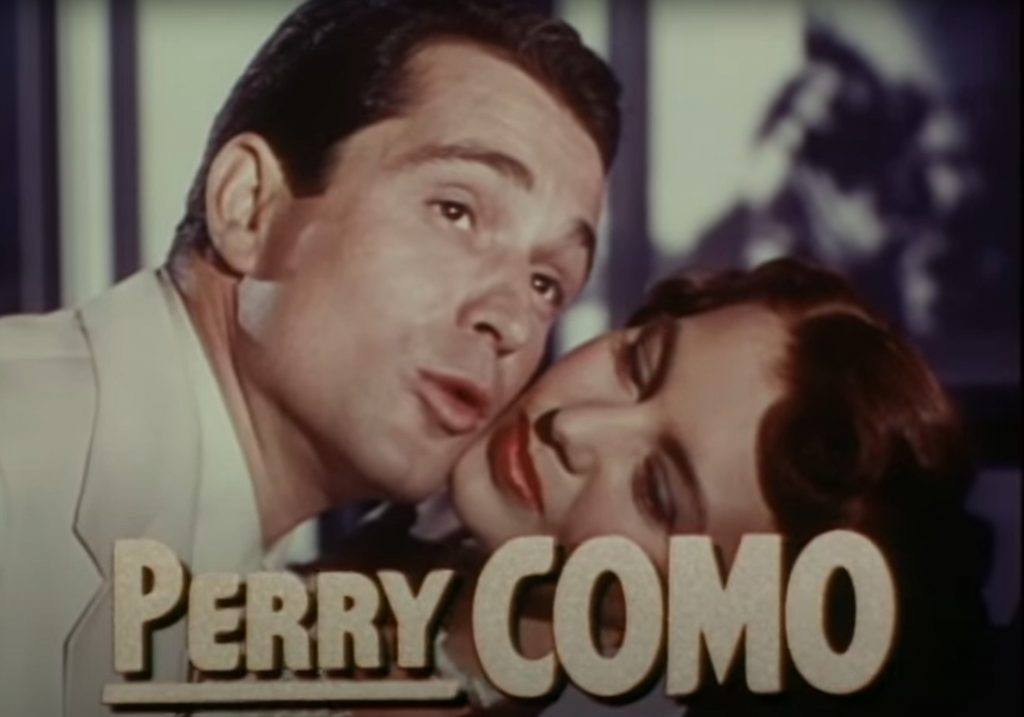
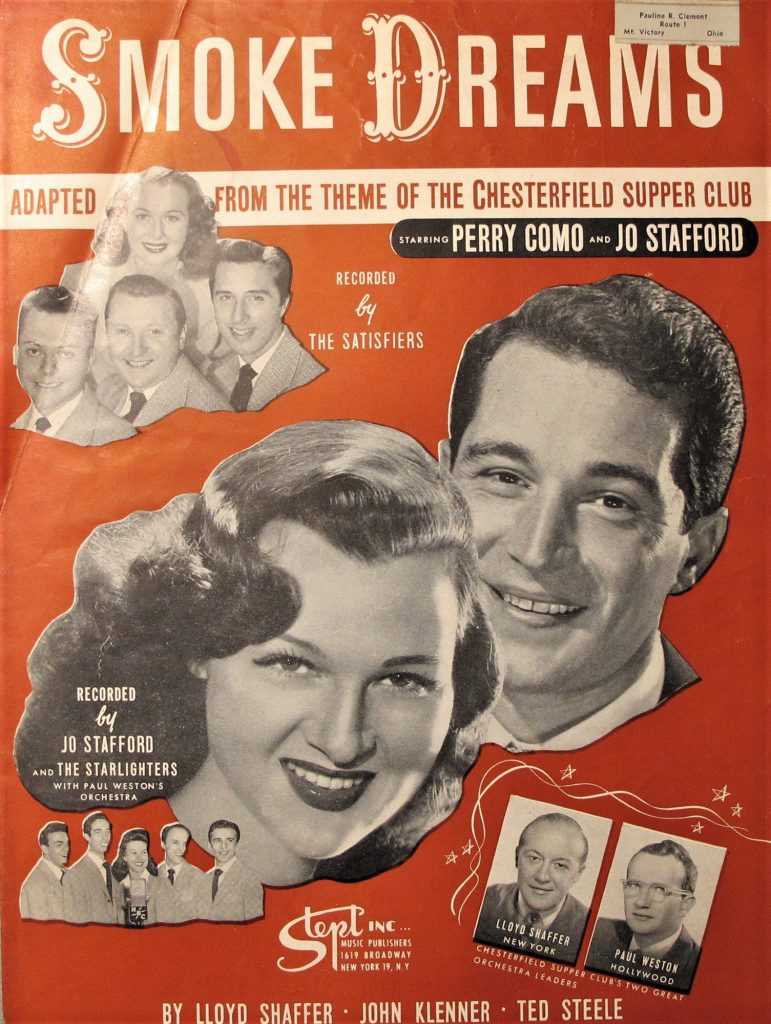
A hiatus born of racism
By 1948, multi-talented Lena Horne, who lived for a while during the 1930s in Pittsburgh’s Hill District neighborhood, where her father ran a hotel, had been appearing on the big screen longer than Kelly or Como. She started in 1938 with “The Duke is Tops”(re-released in 1943 as “The Bronze Venus”) and broke barriers as the first black performer to sign a long-term Hollywood studio contract when she inked a seven-year agreement with MGM in 1942. But while she appeared in at least 11 feature films before “Words and Music,” she faced constant challenges securing lead roles. With few exceptions, most notably “Cabin in the Sky” (1943), Horne was too often relegated to the role of “guest performer,” her scenes easily cut by Southern film distributors. “Words and Music” was no exception. Horne sang two songs that were cut in cities such as Memphis, Tenn., a practice to which MGM film officials as usual “withheld any comment.”[4] Increasingly frustrated, she largely abandoned Hollywood after 1948 to focus on her celebrated performing career and civil rights activism. Her name would not appear again as a lead in a film until 1969’s “Death of a Gunfighter. “
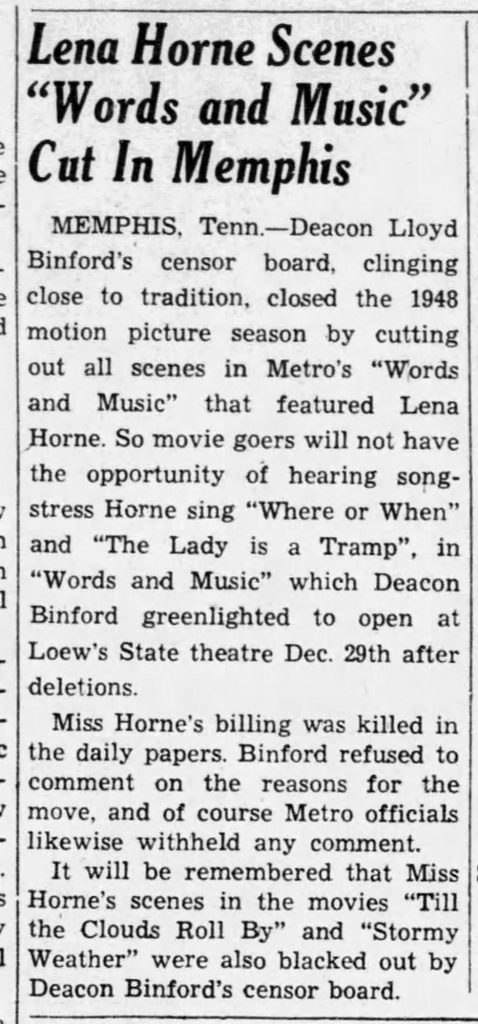
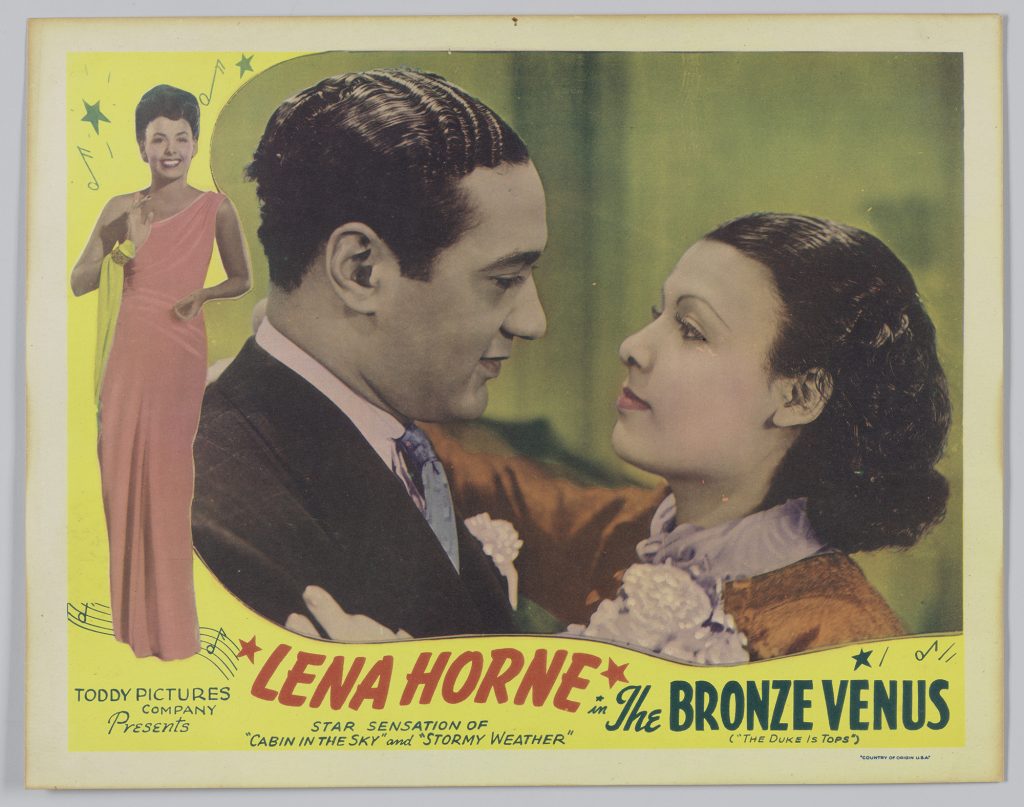
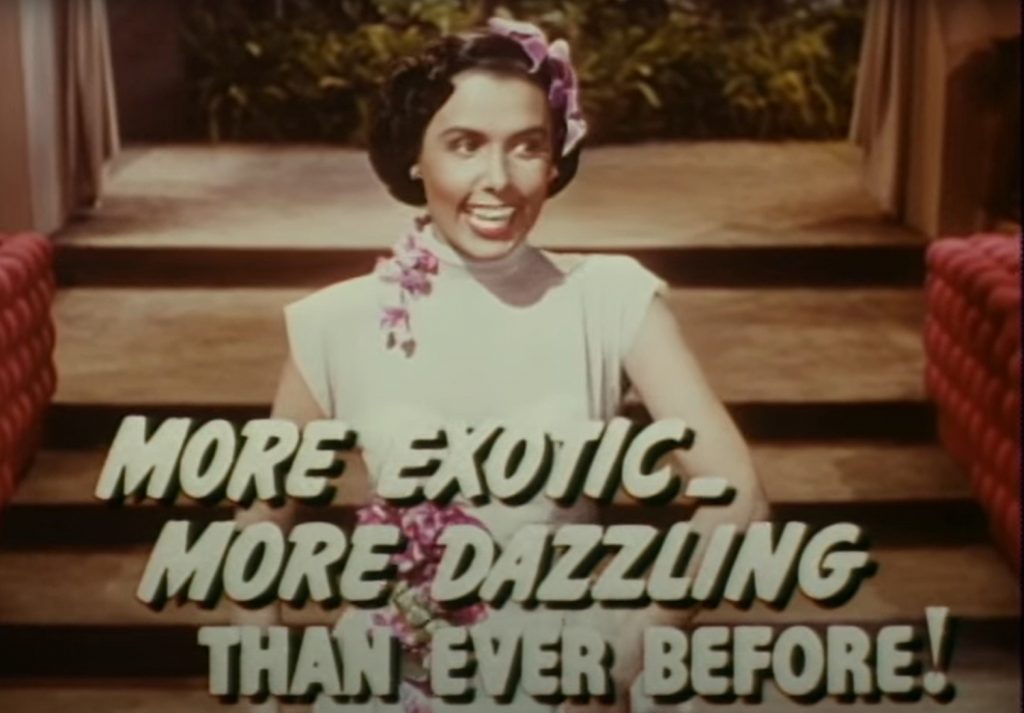
Like Perry Como, Horne also found new opportunities on the small screen. She frequently appeared on TV variety programs and talk shows. She was an active and vibrant TV performer through the 1990s and a favorite guest of Perry Como. During Como’s years hosting the “Kraft Music Hall,” between 1959 and 1967, the two former Western Pennsylvanians often sang duets together.[5]
For Further Viewing
Many video clips from “Words and Music” are available online. Here are a few you can check out.
Multiple clips exist from Perry Como’s television shows. Please note, as with most saved television footage, the video quality is rough. Likewise, segments from the “Chesterfield Supper Club” feature prominent placement of cigarette advertisements due to the underwriting of the Chesterfield brand. This may strike modern audiences as inappropriate, but it was the standard practice of the day.
For examples of Como’s later Christmas Specials, check out these clips:
For joint television appearances of Perry Como and Lena Horne, check out these videos:
Leslie Przybylek is senior curator at the Heinz History Center.
[1] Karl Krug, “New Years Eve Shows Scheduled,” Pittsburgh Sun-Telegraph, December 29, 1948, 16; While Marcus Loew funded the construction of the Lowe’s Penn Theater, he never saw it in action. Scheduled to attend the Labor Day opening on September 5, 1927, Loew died of a heart ailment the morning of the day he was supposed to appear.
[2] “Billy Rowe’s Note Book,” The Pittsburgh Courier, May 8, 1948, 16.
[3] The ballet appeared near the end of the Rodgers and Hart 1936 Broadway musical On Your Toes.
[4] “Lena Horne Scenes ‘Words and Music’ Cut in Memphis,” The Weekly Review (Birmingham, AL), January 14, 1949.
[5] Starting in 1963, the Kraft Music Hall became a monthly program, but continued airing with Como as the host.